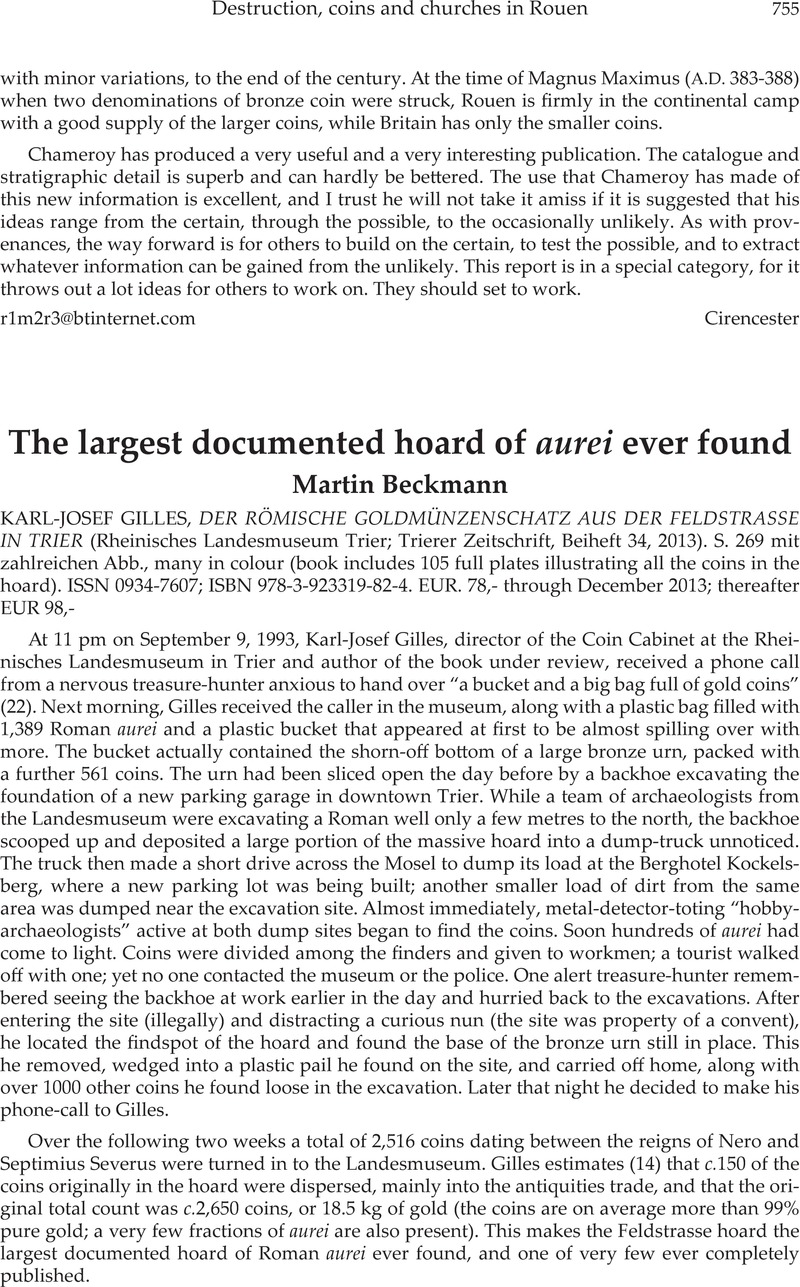No CrossRef data available.
Published online by Cambridge University Press: 27 November 2014

1 E.g., aureus 1931, minted in the name of Trajan and depicting an image of his Forum, is a variant of RIC 255, but this variant appears in the catalogue of the Coins of the Roman Empire in the British Museum (Trajan 509)Google Scholar, which appeared 10 years after RIC.
2 Catalogues nos. 1122-23 and 1134 (of Vespasian) show a shape above the reverse legend that appears to be the result of a die chip; the progress of this damage over time is visible in the illustrations of 1122 (earlier) and 1134 (later; these are the same die) on p. 37. Similarly, no. 1703, of Vespasian for Domitian, is listed (38) as a variant based on an apparent reverse legend of KOS V instead of COS V; the vertical bar of the apparent K is also likely to be the result of die damage altering the appearance of the C.
3 Gilles (42) identifies a coin of Antoninus Pius (no. 2239) as having an unknown type, based on interpreting the tiny figure held by Roma as a trophy rather than a Victory or a Palladium. A trophy would make the type new, but to my eye the 3 dots above the “head” of the figure were probably intended to represent the 3 crests of Athena’s helmet and would thus indicate that this figure should be identified as a Palladium, making the coin a known type.
4 On the particular importance of the gold coinage as bearer of topical types, see Beckmann, M., “The significance of Roman Imperial coin types,” Klio 91 (2009) 162–95CrossRefGoogle Scholar.